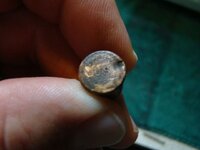Mike from MI
Silver Member
- Oct 13, 2007
- 3,262
- 2,515
- 🏆 Honorable Mentions:
- 15
- Detector(s) used
- Etrac, Minelab Explorer II, Exterra 30, Fisher CZ-21, and CZ-20
- Primary Interest:
- All Treasure Hunting
Found this old brass casing Short little guy. Rim fire, with US on the base. About 1/2" long, and just over 3"8" diameter.
Maybe caliber and age?
Thanks.
Maybe caliber and age?
Thanks.












